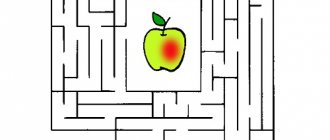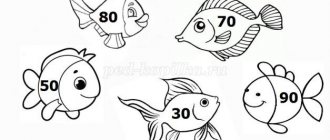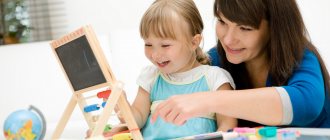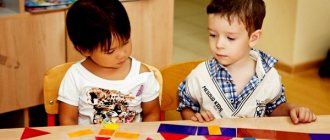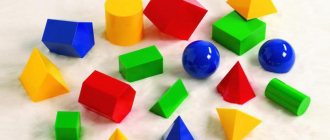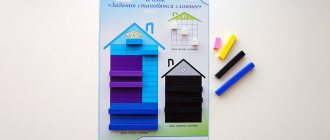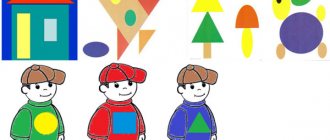Every mother can teach her child to count to 10. To do this, you don’t have to run to an elite development center with famous teachers. It is important to understand at what age it is optimal to do this and what methodological techniques are best used so that learning to count occurs naturally and the child gains new knowledge with interest.
7ya.ru
You can teach your child to count to 10 in several stages.
You can begin to introduce your child to numbers from 1.5 to 2 years of age. At this age, actions with objects come to the fore in learning; we don’t use numbers yet. We eat - count spoons, swim - count toys, get dressed - count fingers, go for a walk - count steps, set the table - count plates and forks, ride in an elevator - follow the numbers on the screen, count floors, etc.
The second stage is getting to know the numbers. We name the number of items and show the corresponding number.
Next, you can teach children to write numbers and perform simple arithmetic operations with them.
Reverse counting
Counting down is counting to 10 and back, that is, in descending order: 10, 9, 8, 7, 6, 5, 4, 3, 2, 1, 0. Counting down is necessary for all preschoolers to master, since counting down is the necessary minimum knowledge for successful study in 1st grade. The easiest way to start teaching to count backwards is through objects, that is, through visual-figurative thinking, which helps preschool children to assimilate new information received much better. teaching a child to count backwards only after forward counting has been well mastered and put into practice, otherwise the child will get confused and will not learn new knowledge.
Count to 100
Children as young as five years old can learn to quickly count to 10 or 20 in their head. But not all parents know how to teach a child to count to 100 at this age. Yes, a small preschooler may experience difficulties in the process of mastering new knowledge, especially since the number one hundred provides for a huge number of others, the mere thought of which shocks not only children, but also their parents. In fact, difficulties can be avoided and a preschooler can be taught to count to 100 without difficulty by choosing the right approach.
Learning to count to 100:
- The easiest way to explain to children what “100” is is to give an example of the tens that it consists of (10, 20...90). At the same time, it is necessary to talk about the fact that between tens there are also ones. A preschooler who counts from 1 to 20 will know this.
- Every day the child needs to be given a specific task - learning new numbers. You can limit yourself to ten. In this case, repetition should be carried out from 1 to the number that was learned last.
- After each completed task in the form of mastering new numbers, you can conduct control games. For example, having written a number series, skip several values in it that the child must determine. You can also count any objects that surround it.
- Counting to 100 for children is an incredible achievement for which they must be praised and encouraged, because this is the strongest incentive for achieving great heights.

Counting down
With the help of a poem about counting backwards and using toys and objects in a playful way, you can introduce your child to counting backwards from an early age, but after he has mastered counting forward.
There is a plate on the stump, with ten plums lying on it. The squirrel approached the plate and ran away with the plum.
Nine ripe plums in a plate, a mole ran up to the plate, he boldly extended his paw and put the plum in his mouth.
Eight plums on a clean dish. Someone kindly collected them. The nightingale, with a cheerful whistle, pecked the sweet plum.
There are seven wonderful plums on the stump in a blue plate. A flock of lovely butterflies took one with them.
Six left - very few! Hurry forest people! Then a magpie galloped up and took a berry with its beak.
There were exactly five ripe berries. A toothy wolf came running, started counting the berries, and took another one.
Here are four plums. You can’t pass by the smell! Fragrant and beautiful, I took one prickly hedgehog.
There are only three drains left. Who wants to treat themselves to the Sweet Bone inside? A tit took one away!
There is two cream on the plate. Who's reaching for the plate? Let's give one to the owl, and one will remain!
Important rules for teaching counting to preschoolers
How to teach a child to count?
The very first and most important rule is not to rush to start learning. The parent himself must understand what period of the child’s life will be most suitable for learning. It is not at all important to teach him all the methods of calculation, because when he comes to school, he may encounter completely different methods there. Children should not be forced to learn calculations in preschool if they do not want to. If he shows interest, then it’s time. No interest - learn at school.
The second rule , which is generally required for any undertaking, is gradualism. If parents saw the child’s potential and nevertheless decided to teach him on their own, then they should not demand an instant understanding of the entire meaning of counting. If a child manages to count the number of sticks in his hand, then matching them with the number on paper is quite difficult. This requires the use of abstract thinking, which develops later, closer to 4 years.
Third rule : conduct training in the form of a game. After all, the constant and main interest of children in preschool age is to constantly play. And we all know that what sparks interest is what is learned best. So you need to make a choice between several options: ask your child to count the apples on the dinner table, or count them on the counter while playing shop.
Fourth rule : learn every day. This does not mean that you need to set aside certain hours to sit your child on a chair and force him to count. This means that during any game or walk down the street, you can gently hint to your child that he can count the fingers on his hand. Such simple actions, it would seem, for a parent, but so difficult for a child. If you walk down the street in a sweater, count the buttons; if you play at home, count the number of chairs.
If you follow these simple rules, you can not only teach counting in a fairly quick time, but also arouse interest in it.
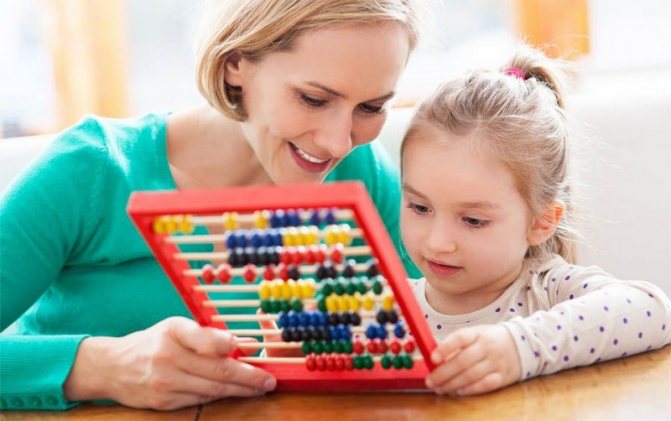
Counting to 10 and back
Tasks for counting down to 10 and back:
- Say the numbers from 3 to 1 in reverse order. Count down answer: 3 2 1.
- Say the numbers from 5 to 2 in reverse order. Count back answer: 5 4 3 2.
- Say the numbers from 7 to 3 in reverse order. Count back answer: 7 6 5 4 3.
- Say the numbers from 6 to 2 in reverse order. Count back answer: 6 5 4 3 2.
- Say the numbers from 8 to 1 in reverse order. Count down answer: 8 7 6 5 4 3 2 1.
- Say the numbers from 9 to 5 in reverse order. Count back answer: 9 8 7 6 5.
- Say the numbers from 10 to 6 in reverse order. Count back answer: 10 9 8 7 6.
- Say the numbers from 10 to 1 in reverse order. Count down answer: 10 9 8 7 6 5 4 3 2 1.
Thus, by completing various counting tasks you can easily test and consolidate your child’s knowledge of counting .
At what age is it better to teach a child to count according to the Federal State Educational Standard?
The first step in learning will be timing. It must be borne in mind that teaching children to count at 1 year old will not be the best idea. You need to choose the moment when the child’s age is already sufficient for such intellectual stress, so as not to simply complicate the situation.
The most optimal age for getting acquainted with the account will be 1.5-2 years. It is at this moment that the child’s mental development will allow him to become familiar with this concept quite easily and in a short time. You should also not forget about individuality: someone can start earlier, someone later. I would like to note that counting and numbers are two different things. It is better to start familiarizing yourself with the numbers between 2 and 3 years.
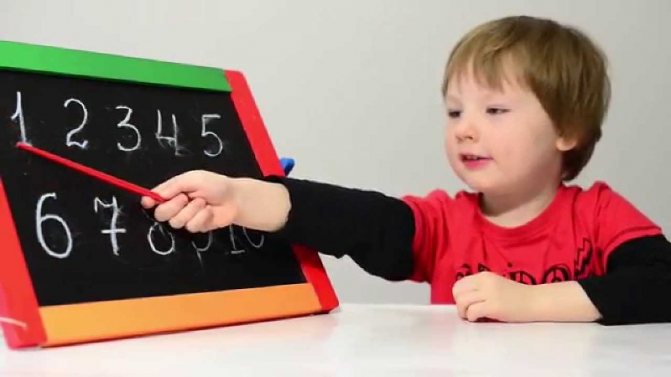
Games and exercises that teach counting to preschoolers
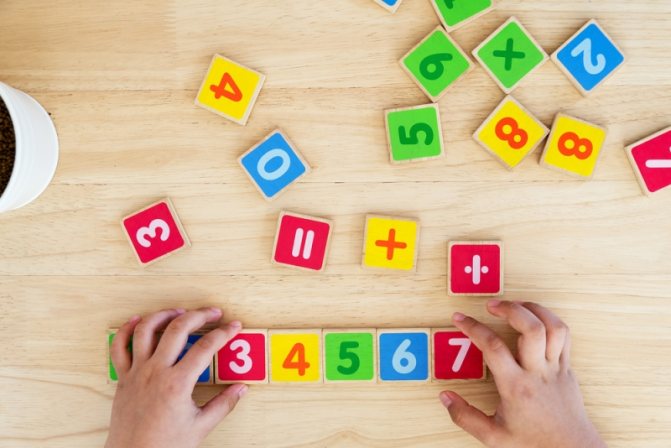
How to teach a child to count while playing? There are many different educational games for preschool children. They all have their own meaning and genre, but the essence is the same - to teach children to count. Here are some of them:
- Put the same amount - I think the name speaks for itself;
- Show as much;
- Find yourself a place - you will need a lot of space and children to play. The hoops are placed on the floor, and inside them are pieces of paper with numbers. Players move around the room, and at a signal they stand around the hoop in the same number as the number in the hoop;
- Puzzles with numbers written on them. They need to be laid out in the correct order.
In any case, the most banal and easiest exercise would be to use counting with your baby in everyday life. If you see flowers in a flowerbed, count them. You can count absolutely everything, even your fingers.
How to teach counting in your head without fingers
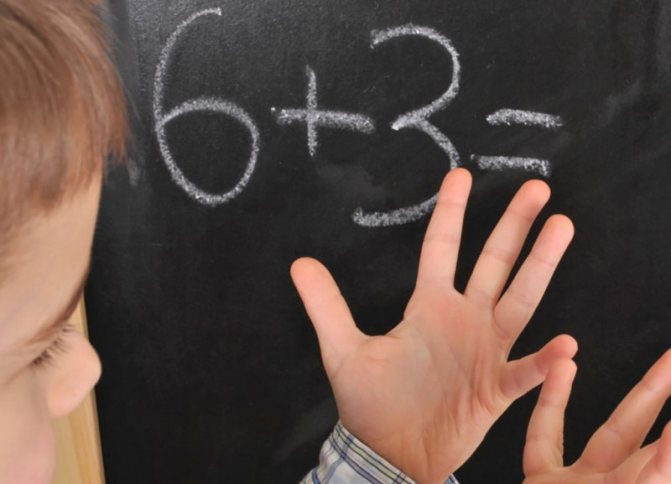
After the child has mastered the skills of counting on objects and already has a basic understanding of numbers, and this is approximately 6 years old, then he is ready to begin learning to count in his head. In general, this skill needs to be developed at school, in mathematics lessons, but many parents can also try themselves as a teacher.
Mental arithmetic is an abstract concept, which means it will be very difficult for children to understand. Therefore, training in such an action must be carried out gradually, relying on the same practical actions with objects. In order for a child to easily perceive mental calculation, it is necessary to familiarize him with numbers very well. It is necessary to explain that the number indicates a certain number of certain items.
While your child is counting three objects, you must show him the number 3 on a piece of paper. A good action to reinforce the material would be to ask to show three fingers on your hand. It is necessary to form a certain image so that when the little one sees the number 3, three apples are spinning in his head, which he was counting before.
A good way would be to play with blocks and a box. The box should fit exactly 20 cubes, divided into two rows. As the baby fills the box, he will visually see and remember how much to put and where. Over time, he will develop a skill that allows him to immediately determine how many cubes are missing in one of the rows.
It is necessary to ensure that the child recognizes the number by associating it with the number and quantity of objects, visually representing them. Learning can be considered complete when the child can immediately, without counting or touching objects, count them and name the exact number.
How to develop a child's interest in counting
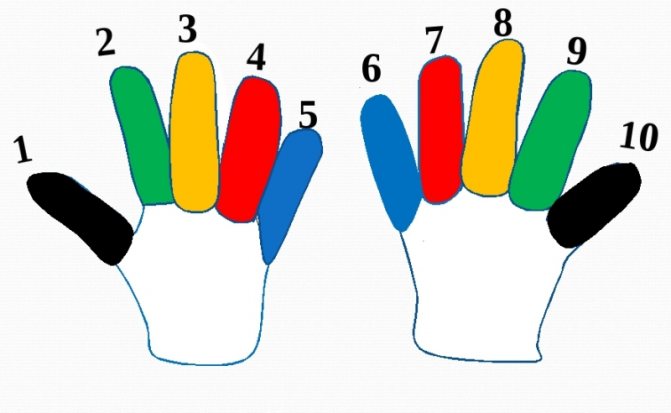
No child will like it if their parents force them to count in the evenings. But all children like games. Try to make a game out of the activity that will be interesting to both you and the baby.
How to teach a child to count? Also, an effective way would be to reward each correct action. Naturally, you can’t spoil anyone, but reward them for good work - why not? Do not forget to create a favorable atmosphere for learning, because if the child enjoys doing this, he may not even notice that a training program has been made for him.
What mistakes do parents make when teaching their children to count?
A fairly common mistake parents make is haste. Many people want to quickly teach their children to count so that later they can go out and brag about it to others. This cannot be done. During hasty learning, you can easily skip any stage of thinking development and limit it from other information that is so necessary for children.
There is no need to chase results. If something doesn’t work out at all, postpone the training for six months and let the child be with a free head, without all this knowledge about calculations. If parents need their child to know numbers, the optimal age for this would be 4 years, but not 3, and certainly not 2.
The third mistake of parents: incorrect teaching. The fact is that moms and dads, as a rule, will not know certain teaching methods, even if they read about it on the Internet. All this leads to the fact that learning will jump through the step, and not rise gradually. There are such terrible situations when the baby has not yet really learned numbers, and several examples of addition are given to him at once.
Well, the last mistake: you don’t need to turn learning arithmetic at home into a school lesson. A child can learn mathematics at school even without parents; their task is to give basic knowledge of one or another operation when counting, but not to teach them how to solve examples without errors. When the child is comfortable learning, then you need to study with him, but when you are not in the mood for it, why insist?
